Watching Winnie the Pooh with Lauren and Leon
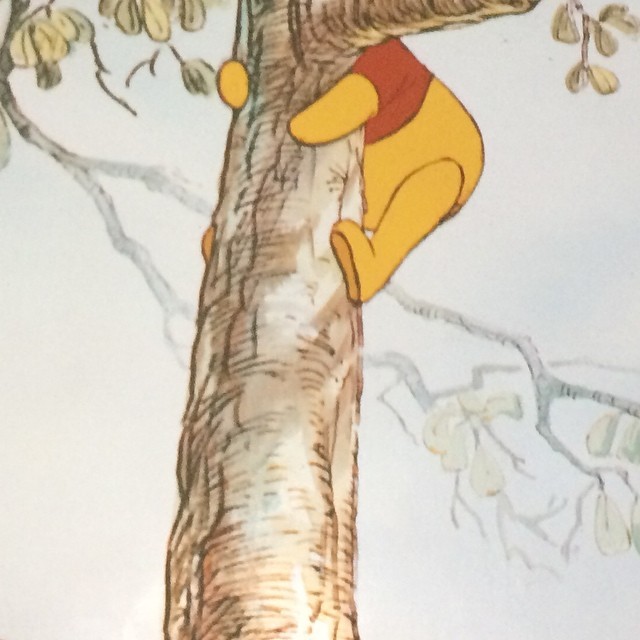
#notebook
Robin Thicke - Blurred Lines (ft. T.I. & Pharrell) HD with Lyrics on screen - YouTube
#notebook
Robin Thicke - Blurred Lines (ft. T.I. & Pharrell) HD with Lyrics on screen - YouTube
#notebook
I have just finished reading this book by Fogus.
I enjoyed the section about implementing a generic tree traversal so it takes the function that should operate on the nodes. I enjoyed the exploration of chaining that made constructors and methods as first class as functions. I enjoyed it as another pass through functional concepts that have been crystallising in my mind for the last few years.
#notebook
I have just finished reading this book by Fogus.
I enjoyed the section about implementing a generic tree traversal so it takes the function that should operate on the nodes. I enjoyed the exploration of chaining that made constructors and methods as first class as functions. I enjoyed it as another pass through functional concepts that have been crystallising in my mind for the last few years.
#notebook
I enjoyed the first Raid film: elegantly staged martial arts where the violence has a satisfying crunch to it. But The Raid 2 is far superior because it is better at controlling the gaze of the audience.
To say the fight scenes are dances is sort of true, but sort of trite. Dances in films are often shot wide, and they are ensemble pieces which means there is only ever one thing going on. They’re like stage plays. In film, the eye can be directed and montage can be used to show that more than one thing is happening at once. Many people who make dance movies seem not to understand this. They seem blinded by the fact that the material originated as a play.
The film shows us real places with many things going on at once. This makes the film very immersive and, thus, visceral.
Part of the director’s skill is in choreographing elaborate set pieces with many concurrent sub-fights, and presenting them in a small number of extended shots. For example, there is a big punch up in the muddy exercise yard of a prison. The camera pans and dollies from fight to fight in a way that must have required a great deal of organisation. But the director is better than that. We are not seeing the proceedings through our naked eye. We see them through a camera that can do film things: zoom, frame, focus. At the end of one long shot, the camera finds two men trying to escape over a fence. It rises into the air as one of them climbs, shows him being shot, tilts up and zooms to see the prison sniper who fired the shot, and tilts back down to see the second prisoner get shot.
#notebook
I enjoyed the first Raid film: elegantly staged martial arts where the violence has a satisfying crunch to it. But The Raid 2 is far superior because it is better at controlling the gaze of the audience.
To say the fight scenes are dances is sort of true, but sort of trite. Dances in films are often shot wide, and they are ensemble pieces which means there is only ever one thing going on. They’re like stage plays. In film, the eye can be directed and montage can be used to show that more than one thing is happening at once. Many people who make dance movies seem not to understand this. They seem blinded by the fact that the material originated as a play.
The film shows us real places with many things going on at once. This makes the film very immersive and, thus, visceral.
Part of the director’s skill is in choreographing elaborate set pieces with many concurrent sub-fights, and presenting them in a small number of extended shots. For example, there is a big punch up in the muddy exercise yard of a prison. The camera pans and dollies from fight to fight in a way that must have required a great deal of organisation. But the director is better than that. We are not seeing the proceedings through our naked eye. We see them through a camera that can do film things: zoom, frame, focus. At the end of one long shot, the camera finds two men trying to escape over a fence. It rises into the air as one of them climbs, shows him being shot, tilts up and zooms to see the prison sniper who fired the shot, and tilts back down to see the second prisoner get shot.
#notebook
This is probably a shallow observation. It is probably also mostly incorrect. Pure symbols in art are worthless. Their value increases as they become less symbolic and more representational. The pebble in Oranges Are Not the Only Fruit represents only what the author imbues it with. Its properties are divorced from its meaning. It is divorced from real life. Which means it is impossible to relate to viscerally. The Broken Circle Breakdown has a pervasive theme of cover-ups: tattoo cover-ups, painting over the dead daughter’s wallpaper, putting bird silhouettes on windows so real birds don’t mistake them for air. Though the cover-up is also a symbol, it is founded on real acts that are driven by the desires of the characters. It is representational, and, thus, meaningful.
#notebook
This is probably a shallow observation. It is probably also mostly incorrect. Pure symbols in art are worthless. Their value increases as they become less symbolic and more representational. The pebble in Oranges Are Not the Only Fruit represents only what the author imbues it with. Its properties are divorced from its meaning. It is divorced from real life. Which means it is impossible to relate to viscerally. The Broken Circle Breakdown has a pervasive theme of cover-ups: tattoo cover-ups, painting over the dead daughter’s wallpaper, putting bird silhouettes on windows so real birds don’t mistake them for air. Though the cover-up is also a symbol, it is founded on real acts that are driven by the desires of the characters. It is representational, and, thus, meaningful.
#notebook
I’ve been playing through this again while I’ve been in England for my brother’s wedding.
Three things have been prominent this time through.
The life that Joel has been leading is one of risk and reward. But the risk is always death, and the reward is always life. He dives into a flooded basement to see if he can find anything that will increase his chances of survival. He risks dying in the attempt.
I love the way that things get darker and darker and worse and worse.
Joel’s rage at the loss of his family is taken out on the people he shoots and bashes and stabs and bludgeons. This transforms into a feeling of protective rage towards anyone who would come near Ellie.
#notebook
I’ve been playing through this again while I’ve been in England for my brother’s wedding.
Three things have been prominent this time through.
The life that Joel has been leading is one of risk and reward. But the risk is always death, and the reward is always life. He dives into a flooded basement to see if he can find anything that will increase his chances of survival. He risks dying in the attempt.
I love the way that things get darker and darker and worse and worse.
Joel’s rage at the loss of his family is taken out on the people he shoots and bashes and stabs and bludgeons. This transforms into a feeling of protective rage towards anyone who would come near Ellie.
#notebook
http://www.imdb.com/videoplayer/vi586001433
Ethan Hawke is startlingly interesting in both of his segments in this piece about Boyhood.
[2m 10s] The idea is to do a portrait of a family through the eyes of their son. There is generally an artifice to any film about growing up. Even a great film like The 400 Blows has to pick one tiny moment and jerry-rig all the life events into that moment. What Rick decided to do was to study the period when we’re all formed around first grade when you start to have memories and start to have an identity, an ego. And how that ego is created by you, your family, your culture and the period you live in. It’s kind of like getting to make Ordinary People over twelve years.
[5m 50s] The really dynamic thing for me about my character is that he is perceived entirely through the eyes of a child. So you don’t really know what he’s like except for the way his son perceives him. Kids are funny like that. They don’t really know what their parents do. ‘What does your Dad do?’ 'Oh, he works in medicine.’ They don’t really know much about it. They don’t really think that much about you. They take you for granted. So I had to create a character that the audience is thinking one thing… It starts and he’s kind of a ne'er do well because he’s on the outside, like a lot of men are in divorce. You kind of get spun away because there’s an idea that kids should be with the mother. So you kind of operate as a satellite moon. And slowly he starts to show up more and more and figure out how to take part in their lives.
#notebook
http://www.imdb.com/videoplayer/vi586001433
Ethan Hawke is startlingly interesting in both of his segments in this piece about Boyhood.
[2m 10s] The idea is to do a portrait of a family through the eyes of their son. There is generally an artifice to any film about growing up. Even a great film like The 400 Blows has to pick one tiny moment and jerry-rig all the life events into that moment. What Rick decided to do was to study the period when we’re all formed around first grade when you start to have memories and start to have an identity, an ego. And how that ego is created by you, your family, your culture and the period you live in. It’s kind of like getting to make Ordinary People over twelve years.
[5m 50s] The really dynamic thing for me about my character is that he is perceived entirely through the eyes of a child. So you don’t really know what he’s like except for the way his son perceives him. Kids are funny like that. They don’t really know what their parents do. ‘What does your Dad do?’ 'Oh, he works in medicine.’ They don’t really know much about it. They don’t really think that much about you. They take you for granted. So I had to create a character that the audience is thinking one thing… It starts and he’s kind of a ne'er do well because he’s on the outside, like a lot of men are in divorce. You kind of get spun away because there’s an idea that kids should be with the mother. So you kind of operate as a satellite moon. And slowly he starts to show up more and more and figure out how to take part in their lives.
#notebook
[Boyhood (film) - Wikipedia](https://en.wikipedia.org/wiki/Boyhood_(film))
Absolutely jam-packed with touching, real moments.
The film isn’t nearly as satisfying as Linklater’s “Before” series. Satisfaction requires structure which requires meaning which requires causality which, over the span of twelve years, is not authentic. Which is to say: an arc would have felt too neat and phoney.
The film also suffered from a POV problem. Some of it felt like it was seen through Mason’s eyes. But most of it felt like it was through my eyes. It was a film about my memory of my childhood, rather than what my childhood was like when I lived it. The shot above is too wide to be from the perspective of the person sitting in the soil.
#notebook
[Boyhood (film) - Wikipedia](https://en.wikipedia.org/wiki/Boyhood_(film))
Absolutely jam-packed with touching, real moments.
The film isn’t nearly as satisfying as Linklater’s “Before” series. Satisfaction requires structure which requires meaning which requires causality which, over the span of twelve years, is not authentic. Which is to say: an arc would have felt too neat and phoney.
The film also suffered from a POV problem. Some of it felt like it was seen through Mason’s eyes. But most of it felt like it was through my eyes. It was a film about my memory of my childhood, rather than what my childhood was like when I lived it. The shot above is too wide to be from the perspective of the person sitting in the soil.
#notebook
How to play Street Fighter: a fighting game primer for everyone - Polygon
A deep dive into the tactics and strategy underlying all fighting games.
The game-specific minutiae is less interesting. There is no general truth in Capcom’s decision that you must adjust which buttons you press for a special move if your opponent happens to be travelling over your head.
But the more generally applicable observations are fascinating.
Ryu embodies all the important elements of fighting game characters because he can put into practice every generic battle strategy. He can control space. He can reap the rewards of anticipating what his opponent will do. He can press an advantage and riposte a pressed advantage.
This pair of zingers. “Throwing a fireball means putting yourself at risk in the immediate moment (by performing an attack with a long startup period) in order to gain an advantage once it’s out.” “The Dragon Punch is basically the anti-fireball; where the fireball sacrifices the present for the future, the DP borrows against the future in favor of right now.”
And a wonderful passage about anticipation. One player carries out a series of attacks to leave his opponent only a few options, correctly predicts how the opponent will respond and then punishes him for it.
#notebook
How to play Street Fighter: a fighting game primer for everyone - Polygon
A deep dive into the tactics and strategy underlying all fighting games.
The game-specific minutiae is less interesting. There is no general truth in Capcom’s decision that you must adjust which buttons you press for a special move if your opponent happens to be travelling over your head.
But the more generally applicable observations are fascinating.
Ryu embodies all the important elements of fighting game characters because he can put into practice every generic battle strategy. He can control space. He can reap the rewards of anticipating what his opponent will do. He can press an advantage and riposte a pressed advantage.
This pair of zingers. “Throwing a fireball means putting yourself at risk in the immediate moment (by performing an attack with a long startup period) in order to gain an advantage once it’s out.” “The Dragon Punch is basically the anti-fireball; where the fireball sacrifices the present for the future, the DP borrows against the future in favor of right now.”
And a wonderful passage about anticipation. One player carries out a series of attacks to leave his opponent only a few options, correctly predicts how the opponent will respond and then punishes him for it.
#notebook
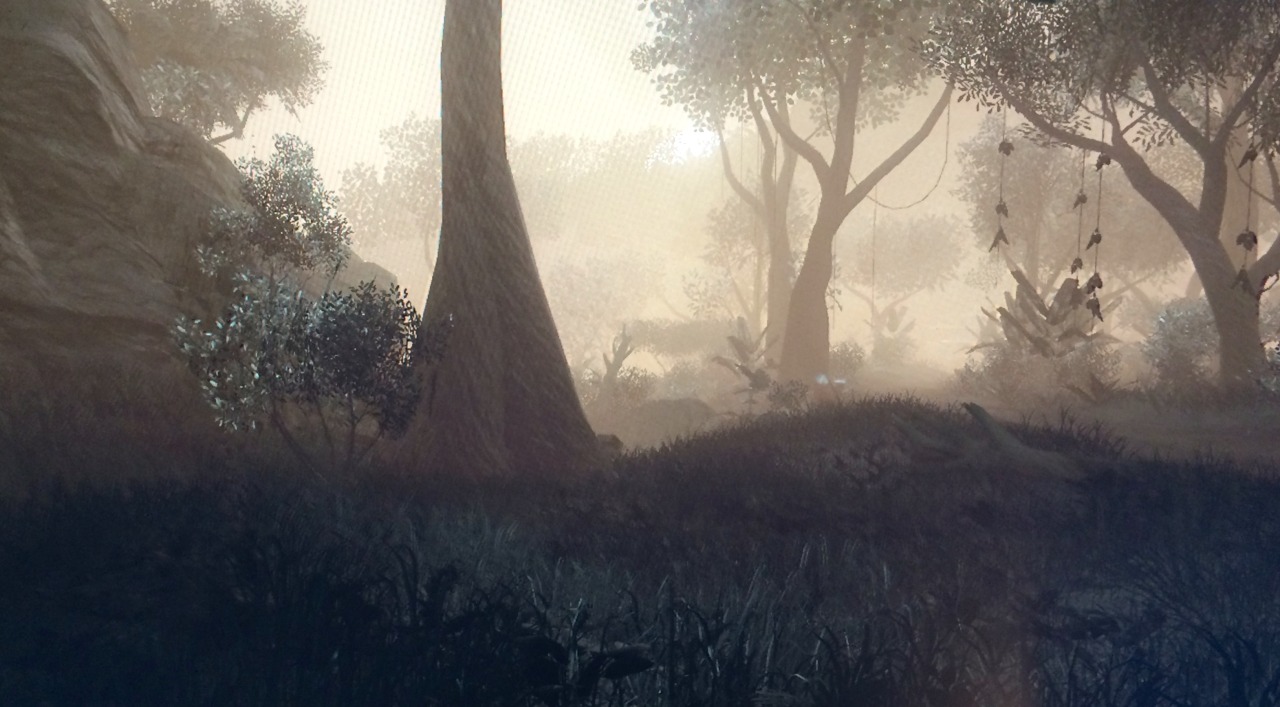
I listened to a fascinating podcast with Clint Hocking, the director of Far Cry 2. He spent a lot of time talking about the systems: the gun jams, the fire, the wildlife, the malaria.
There is magic in the way, after a gunfight is over, birds begin tweeting, you hear a stream flowing, and tranquility descends. And there is magic in the way you have to adapt your tactics from moment to moment as each hare-brained plan goes wrong.
Hocking had a fascinating anecdote about curtailing the way they designed the animal behaviour. Some people at the company were troubled that players would wantonly shoot up the fauna in the forest. He said they tried lots of things, including letting the player pet the animals. Eventually, they just made shooting an animal as boring as possible. You fired and the animal died like a cardboard cutout falling over. Its body wouldn’t respond to any further shots, and would soon dematerialise. He said this meant players might shoot one animal, but would never shoot a second.
(A note about the image. I rather disingenuously lowered my gun when I took the screenshot. It looked far less beautiful and evocative with a disembodied pistol sticking out into the frame. Which says something about the way games approach the expression of meaningful experiences.)
#notebook
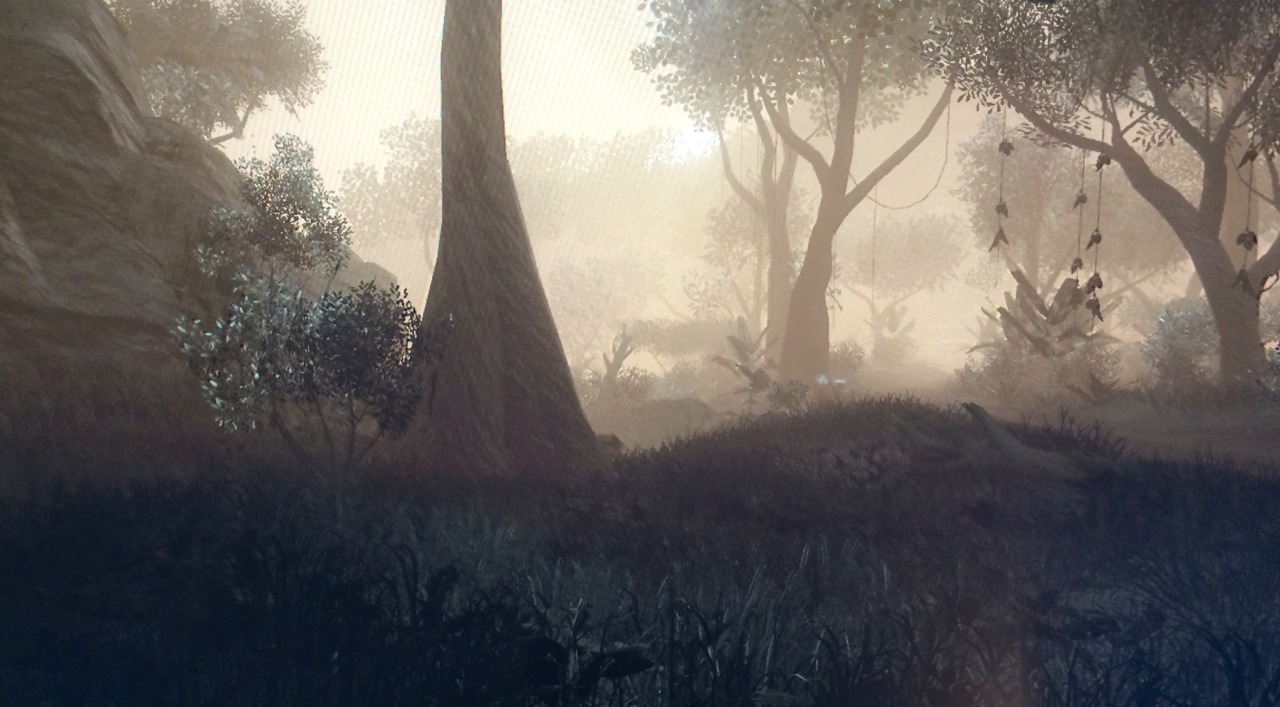
I listened to a fascinating podcast with Clint Hocking, the director of Far Cry 2. He spent a lot of time talking about the systems: the gun jams, the fire, the wildlife, the malaria.
There is magic in the way, after a gunfight is over, birds begin tweeting, you hear a stream flowing, and tranquility descends. And there is magic in the way you have to adapt your tactics from moment to moment as each hare-brained plan goes wrong.
Hocking had a fascinating anecdote about curtailing the way they designed the animal behaviour. Some people at the company were troubled that players would wantonly shoot up the fauna in the forest. He said they tried lots of things, including letting the player pet the animals. Eventually, they just made shooting an animal as boring as possible. You fired and the animal died like a cardboard cutout falling over. Its body wouldn’t respond to any further shots, and would soon dematerialise. He said this meant players might shoot one animal, but would never shoot a second.
(A note about the image. I rather disingenuously lowered my gun when I took the screenshot. It looked far less beautiful and evocative with a disembodied pistol sticking out into the frame. Which says something about the way games approach the expression of meaningful experiences.)
#notebook #medianotes
IGDA Toronto 2013 Keynote: Neil Druckmann, Creative Director & Writer, Naughty Dog - YouTube
I love the way he describes each story iteration and why it failed. Many talks have this format, but his reasoning was is very precise.
I loved what he said about the tension between achieving top-down desires (a beautiful symbol that resonates throughout, trying to get the characters to a certain place for gameplay reasons) and maintaining the internal logic of the story and characters.
#notebook
IGDA Toronto 2013 Keynote: Neil Druckmann, Creative Director & Writer, Naughty Dog - YouTube
I love the way he describes each story iteration and why it failed. Many talks have this format, but his reasoning was is very precise.
I loved what he said about the tension between achieving top-down desires (a beautiful symbol that resonates throughout, trying to get the characters to a certain place for gameplay reasons) and maintaining the internal logic of the story and characters.
#notebook
I saw The Godfather parts one and two at the BAM cinema last summer. I took a packed lunch of pasta with spinach, tomatoes, pesto and parmesan, and blackberries and cherries for pudding.
I loved the first part. It’s a high quality soap opera with guns that is anchored by the meaningful, strong ties of family and heritage.
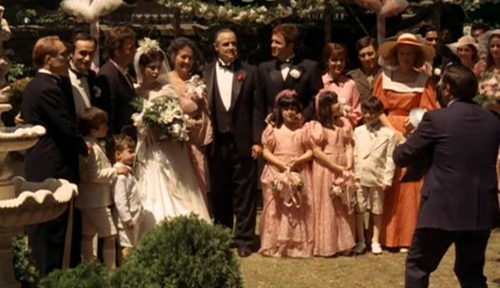
The second part is mostly a shallow plot about gangsters and money, strays from the family and, as a result, is really not very good.
#notebook
I saw The Godfather parts one and two at the BAM cinema last summer. I took a packed lunch of pasta with spinach, tomatoes, pesto and parmesan, and blackberries and cherries for pudding.
I loved the first part. It’s a high quality soap opera with guns that is anchored by the meaningful, strong ties of family and heritage.
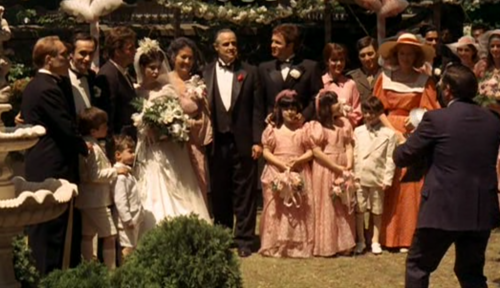
The second part is mostly a shallow plot about gangsters and money, strays from the family and, as a result, is really not very good.
#notebook #medianotes
Really digging Nidhogg, a new fighting game on the Mac and Windows. It pares swordfighting down to stances, rolling, throwing and leaping. It feels super delicate.
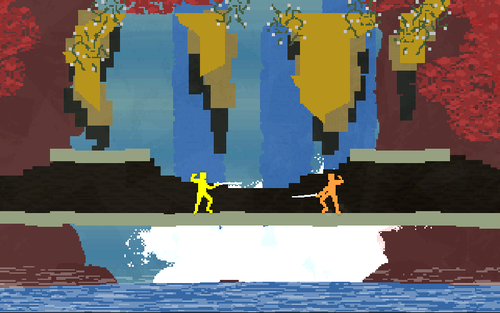
#notebook
Really digging Nidhogg, a new fighting game on the Mac and Windows. It pares swordfighting down to stances, rolling, throwing and leaping. It feels super delicate.
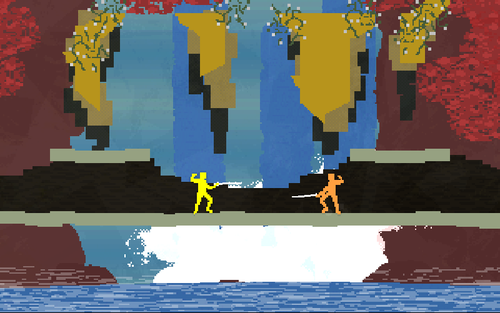
#notebook #medianotes
MIT recently changed their introduction course that everybody takes to learn programming. It’s taught by Abelson and Sussman and they have a book called the Structure and Interpretation of Computer Programs and it’s written in Scheme and it’s what they call a very bottom-up approach to computation and you build from there. And it was all very interesting and it’s still a great way to learn progarmming. But they recently replaced it with a course about programming robots and they do the programming in Python. And the great thing about robots is that the wheels slip and the APIs are badly documented and you can’t really program anymore from the bottom up. You have to program experimentally. You have to devise an experiment, and before you run it, you have no idea if it’s gonna work in the real world - you just have to try it. And that’s really what GUI programming, any kind of API programming has been like almost since the beginning of time. Just all kinds of complicated interactions you forgot about and never really thought about. And they just thought that was a more realistic introduction to the art of computer programming.
#notebook
MIT recently changed their introduction course that everybody takes to learn programming. It’s taught by Abelson and Sussman and they have a book called the Structure and Interpretation of Computer Programs and it’s written in Scheme and it’s what they call a very bottom-up approach to computation and you build from there. And it was all very interesting and it’s still a great way to learn progarmming. But they recently replaced it with a course about programming robots and they do the programming in Python. And the great thing about robots is that the wheels slip and the APIs are badly documented and you can’t really program anymore from the bottom up. You have to program experimentally. You have to devise an experiment, and before you run it, you have no idea if it’s gonna work in the real world - you just have to try it. And that’s really what GUI programming, any kind of API programming has been like almost since the beginning of time. Just all kinds of complicated interactions you forgot about and never really thought about. And they just thought that was a more realistic introduction to the art of computer programming.
#notebook
The third film in Cédric Klapisch’s trilogy. It suffers in comparison with the first two because its messy meaningfulness comes from more plotty plotlines: a visa marriage, a sperm donation. But it is just as funny and warm.
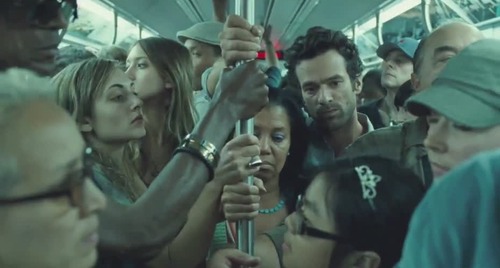
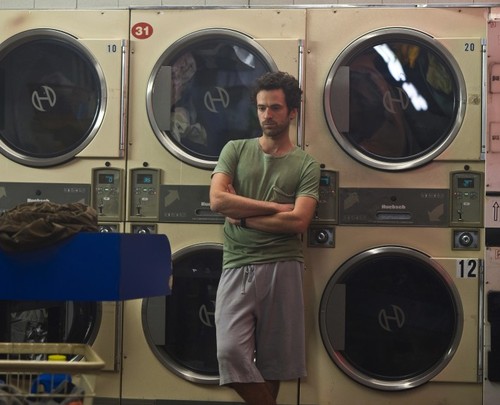
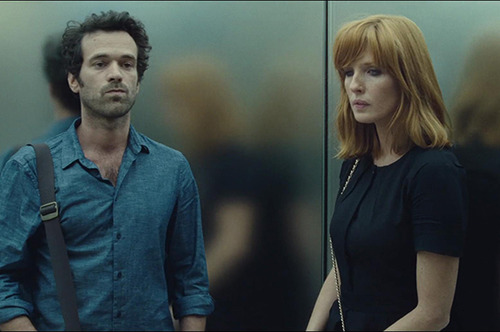
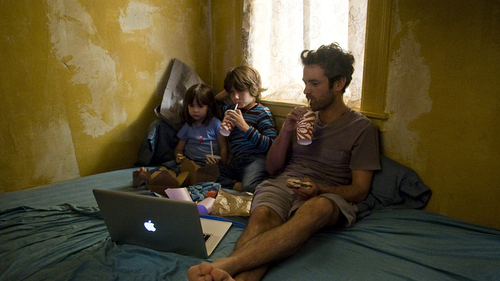
#notebook
The third film in Cédric Klapisch’s trilogy. It suffers in comparison with the first two because its messy meaningfulness comes from more plotty plotlines: a visa marriage, a sperm donation. But it is just as funny and warm.
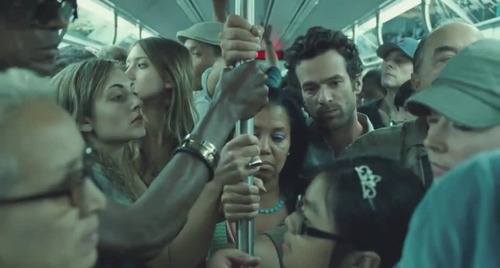
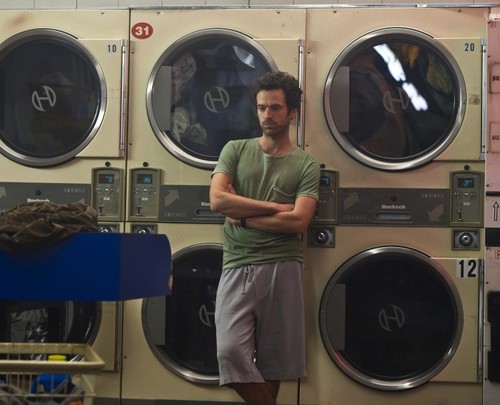
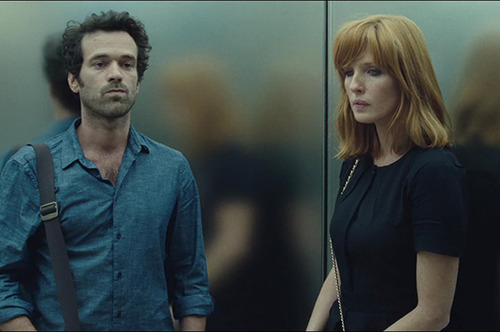
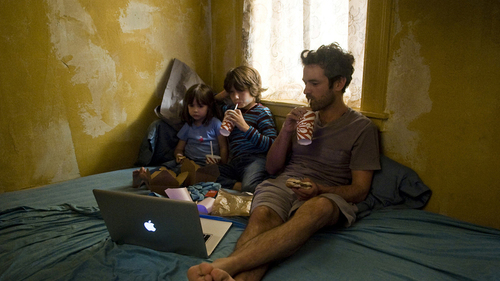
#notebook #medianotes
Debug 19: Wil Shipley from NeXT to Delicious Monster | iMore
A fascinating interview with Wil Shipley, the programmer who founded Omni and Delicious Monster. Touches on both companies, OmniWeb, Delicious Library, contracting for NeXT and contracting for the NSA. I greatly admire Wil’s work ethic and sense of software design.
#notebook
Debug 19: Wil Shipley from NeXT to Delicious Monster | iMore
A fascinating interview with Wil Shipley, the programmer who founded Omni and Delicious Monster. Touches on both companies, OmniWeb, Delicious Library, contracting for NeXT and contracting for the NSA. I greatly admire Wil’s work ethic and sense of software design.
#notebook
Chainsaw put out some of my all-time favourite records:
[Sleater-Kinney, Sleater-Kinney](https://en.wikipedia.org/wiki/Sleater-Kinney_(album))
Tracy + The Plastics, Muscler’s Guide to Videonics
Chainsaw started as a fanzine around 1988.
I made the fanzine as a kind of tool to help me find other freaky people like myself. I had always wanted to be part of an underground network of freaks, queers, radical thinkers and artists.
I made chainsaw as a way to introduce myself to the ones I read about in fanzines around the world (and to girls at shows).
Around 1991 I found myself in Washington DC with a box of 500 throwaway cassettes.
I decided the best use for them was to make a compilation cassette of all my favorite bands and people of the time. I mostly gave them away or sold them for food money when I was on tour with fifth column.
When I moved back to Olympia I got encouragement from my good friend Gary to start a label with my current job. I put out an authorized bootleg and then the frumpies 7″ and from then on I was a label.
I’m proud of every single chainsaw release. All these records are special to me. I’m inspired by the artists who create the music. I’ve always said the reason why I put out the records by the bands I do is because I really want my very own copy to listen to.
#notebook
Chainsaw put out some of my all-time favourite records:
[Sleater-Kinney, Sleater-Kinney](https://en.wikipedia.org/wiki/Sleater-Kinney_(album))
Tracy + The Plastics, Muscler’s Guide to Videonics
Chainsaw started as a fanzine around 1988.
I made the fanzine as a kind of tool to help me find other freaky people like myself. I had always wanted to be part of an underground network of freaks, queers, radical thinkers and artists.
I made chainsaw as a way to introduce myself to the ones I read about in fanzines around the world (and to girls at shows).
Around 1991 I found myself in Washington DC with a box of 500 throwaway cassettes.
I decided the best use for them was to make a compilation cassette of all my favorite bands and people of the time. I mostly gave them away or sold them for food money when I was on tour with fifth column.
When I moved back to Olympia I got encouragement from my good friend Gary to start a label with my current job. I put out an authorized bootleg and then the frumpies 7″ and from then on I was a label.
I’m proud of every single chainsaw release. All these records are special to me. I’m inspired by the artists who create the music. I’ve always said the reason why I put out the records by the bands I do is because I really want my very own copy to listen to.
#notebook #medianotes
She's Real (Worse than Queer) Part One 1997 on Vimeo
A documentary about the queer women musical movement of the late eighties to mid-nineties. Part 2.
#notebook
She's Real (Worse than Queer) Part One 1997 on Vimeo
A documentary about the queer women musical movement of the late eighties to mid-nineties. Part 2.
#notebook
“You put this chayenge in me. I used to be so cruel, but now it’s you who’s breaking all the rules.”
“I was sleepless, 2nd Avenue. Everybody’s out tonight. 85 at half past two.”
“From a block away, I can see your shades, drawn down and black.”
“Tonight it’s much too hot to sleep… now I am walking down Rivington to East River Park.”
#notebook
“You put this chayenge in me. I used to be so cruel, but now it’s you who’s breaking all the rules.”
“I was sleepless, 2nd Avenue. Everybody’s out tonight. 85 at half past two.”
“From a block away, I can see your shades, drawn down and black.”
“Tonight it’s much too hot to sleep… now I am walking down Rivington to East River Park.”
#notebook #medianotes